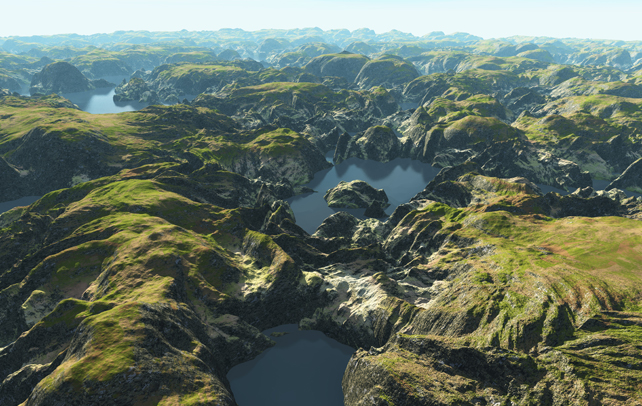Interesting Facts About Amazon River

The Amazon River is the second longest river in the world, after the Nile. The river has the largest drainage basin in the world and covers about 30% of South America. The Amazon got its name from the brave women warriors of the Greek mythology who were known by the name of Amazons. The Spanish soldier, Francisco de Orellana, who was first European to explore the Amazon, in 1541, gave the river its name after reporting pitched battles with tribes of female warriors, whom he likened to the Amazons of Greek mythology. The river originates from the Andes mountains in the Peru and flows from west to east, traversing through Colombia and Brazil, before draining into the Atlantic Ocean. The Amazon rainforests are the largest ecosystem of the world and are home to a wide variety of flora and fauna. The Amazon is the widest river of the world. The width of the river varies between 1.6 km and 10 km at low stage but expands to 48 km during rainy season. Before entering the Atlantic Ocean, the river acquires the shape of a broad estuary about 325 kilometres wide. Due to its vast size, the Amazon is also called as The River Sea. Find out some interesting and amazing facts about the Amazon river.
Fast Facts
Region: South America
Countries: Brazil, Columbia and Peru
Cities: Iquitos (Peru); Leticia (Colombia); Manaus (Brazil), Santarém and Belém do Pará (Brazil), Macapa (Brazil)
Tributaries: Marañón, Japurá/Caquetá, Rio Negro/Guainía, Putumayo (left); Ucayali, Purus, Madeira, Xingu, Tocantins (right)
Primary Source: Andes Mountains (Peruvian Andes)
Primary Source Location: Nevado Mismi, Arequipa, Peru
Mouth Location: Atlantic Ocean
Length: 6,400 km
Width: 1.6 to 10 km at low stages (expanding to 48 km in wet season); 240 km (at the mouth – Atlantic Ocean)
Basin: 7,050,000 km2 (Approx.)
Average Discharge: 209,000 m3/s
Interesting And Fun Facts About Amazon River
- The Amazon River, flowing in South America, is the second longest river in the world and the largest in terms of the water flow.
- The average discharge of Amazon is unbeatable, being greater than the cumulative average discharge of the next seven largest rivers of the world, excluding its own tributaries Madeira and Rio Negro.
- Amazon River is also known to have the largest drainage basin in the world (7,050,000 km2) which accounts for nearly one-fifth of the total river flow of the world.
- Amazon River is spread across approximately 30 percent of the total area of South America; it has over 1,100 tributaries.
- The main source of the Amazon River is considered to be the Ucayali-Apurímac river system.
- The Amazon River System got its first bridge on October 10, 2010, opened over the Rio Negro, just outside Manaus.
- The remote sources of the river are located at a small distance from the Pacific Ocean on the inter-Andean plateau.
- The main characteristic of Amazon River and its associated tributaries is the extensive range of forests that are flooded in every rainy season.
- Continuous rain raises the water level of the river beyond 9 centimetres, causing the surrounding areas filled with water, forming várzea (the ‘flooded forests’).
- The river covers about 110,000 km2 of land area with its water during the dry season. Whereas during the floods, the area extends to 350,000 km2.
- The river dispensed enormous amounts of water into the Atlantic Ocean from 1973 to 1990. It accounted to 300,000 m3/s in the rainy season and an average dispense of 209,000 m3/s otherwise.
- The Amazon River is credited with flowing 20% of the Earth’s fresh water into the Atlantic Ocean.
- This fresh water brought by Amazon River dilutes the salinity and changes the colour of the ocean’s surface over an area of 2,600,000 km2.
- The river does not form a true delta as the tidal bore of the Atlantic Ocean, having sufficient wave and tidal energy, takes away the large deposits of silt of Amazon, hampering the growth of delta past the shorelines.
- The Amazon River divides into multiple channels or long anabranches, connected via a complicated system of natural canals.
- The Casiquare river forms a unique natural canal between the Orinoco and Amazon river systems. The Casiquare is the largest river on the Earth that links two major river systems.
- The Tocantins River merges with Amazon at the tip of its mouth.
- Marajó, the world’s largest combined river/sea island is located on Amazon and is about the size of Switzerland.
- On combining the Pará River and the Marajó island ocean frontage with Amazon, the estuary of the river becomes about 325 kilometres wide which makes Amazon wider at its mouth than the entire length of River Thames in England.
- At the confluence of the Rio Negro and the Rio Solimões near Manaus, Brazil, you can see dramatic confluence of black water (of the former) and sandy water (of the latter).
- The giant Amazon Rainforest and the river basin, extending over more than 5,400,000 km2 is a home to more than one-third of the total world species of the wildlife.
- Amazon River is the prime habitat of the Boto, which is the largest species of river dolphin and is also known as the Amazon River Dolphin. Other than this, a number of Neo-tropical fishes (with more than 5,600 known species) are also found in the river.









